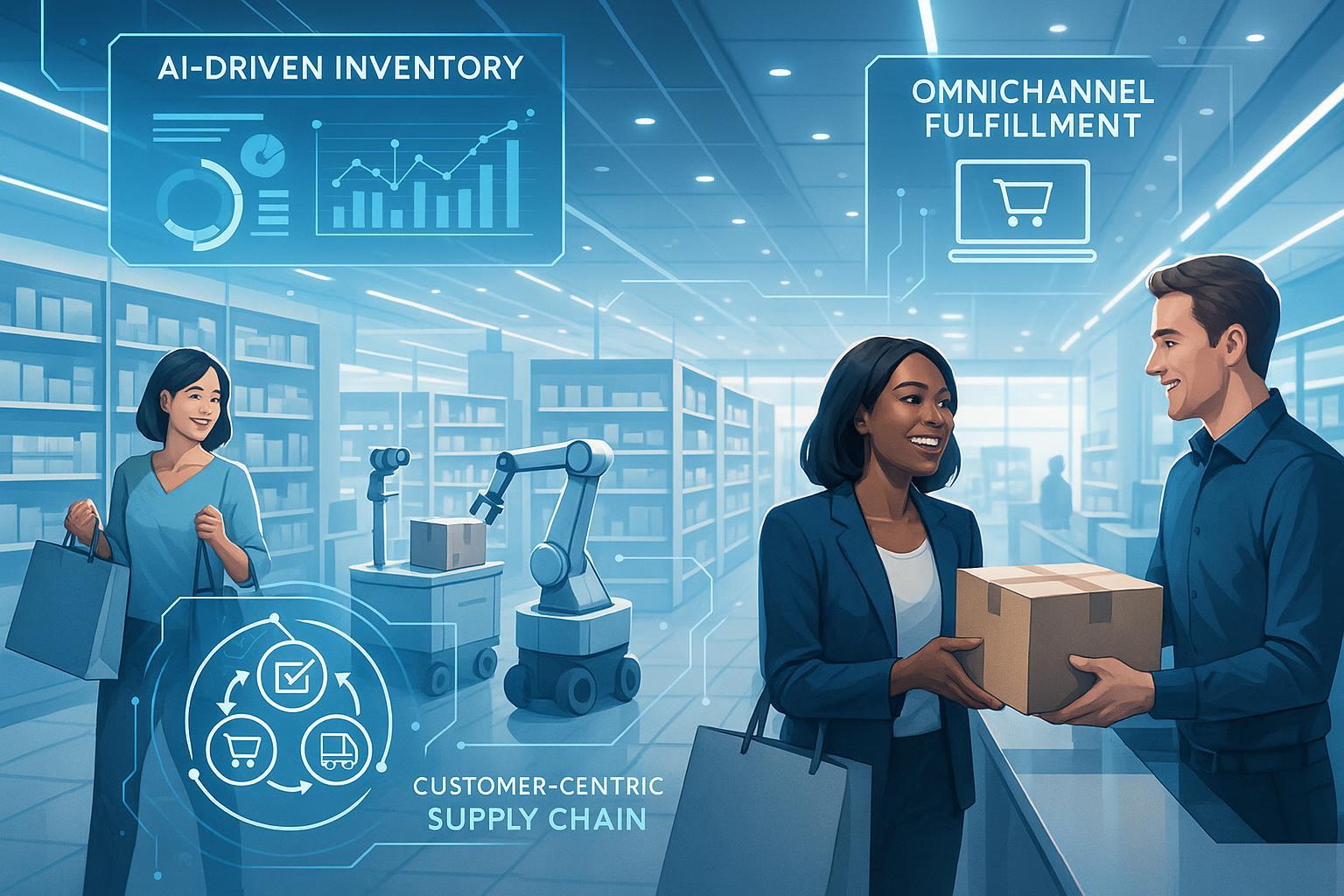Innovative Retail Replenishment Strategies to Enhance Customer Satisfaction

Executive Summary
In 2024, retail replenishment is more than just keeping shelves full—it's a technology-driven discipline that directly impacts customer satisfaction and loyalty. Advanced strategies leveraging AI, automation, and omnichannel integration empower retailers to anticipate demand, reduce stockouts, and deliver seamless experiences. This guide details actionable best practices, industry benchmarks, and real-world cases to help professionals optimize replenishment for measurable customer impact.
What is Retail Replenishment?
Retail replenishment is the process of restocking products to maintain optimal inventory levels across multiple sales channels. In a customer-centric, omnichannel landscape, replenishment blends data analytics, supplier partnerships, and automation to ensure the right products are available at the right time—delighting customers and driving repeat business.
Current Challenges & Customer Expectations
Retailers face high stakes: unpredictable demand, supply chain disruptions, and rising consumer expectations for speed and convenience. Common pain points include:
- Stockouts leading to lost sales and dissatisfaction
- Overstock tying up working capital
- Complex omnichannel fulfillment requirements
Key question: How can retailers minimize out-of-stock rates and optimize inventory turnover while delighting customers across channels?
1. Predictive Analytics for Demand Forecasting
Summary: Harnessing AI and analytics to anticipate demand boosts in-stock rates and reduces lost sales.
Advanced predictive models use historical sales, market signals (such as weather or online trends), and external data to accurately forecast demand at the SKU and store level (42Signals). This results in:
- 30–50% reduction in forecast error (McKinsey)
- 98%+ in-stock rates
- 10–20% inventory savings
Example: Walmart’s AI-powered system integrates real-time sales and external signals to adapt inventory rapidly, supporting same-day fulfillment and 98%+ in-stock rates (Industry report).
Operational Tip: Implement demand forecasting platforms (e.g., Kinaxis Demand.AI, Synth Unified Inventory Intelligence) and schedule regular model recalibration to match market trends.
2. Just-in-Time (JIT) Inventory & Supplier Collaboration
Summary: JIT inventory, coupled with close supplier partnerships, minimizes excess stock and shortens lead times.
Vendor-managed inventory (VMI) and shared demand planning reduce manual errors and enable right-sized, just-in-time deliveries (Dropoff).
- 15–20% faster replenishment cycles
- 10–30% reduction in stockouts
- Enhanced fill rates
Example: Amazon’s use of AI-driven replenishment and dynamic supplier collaboration has resulted in 10–15% revenue boost and reduced inventory levels (Industry surveys).
Operational Tip: Develop supplier scorecards, establish joint forecasting routines, and automate reorder triggers with real-time inventory and sales data.
3. Automated Replenishment Systems
Summary: Automation and robotics dramatically increase replenishment speed and accuracy.
Automated workflows (barcode/RFID scanning, robotics, triggered orders) eliminate manual errors and support real-time stock visibility (SafetyCulture). Successful retailers:
- Achieve up to 30% reduction in stockouts
- Improve inventory turnover by 15–20%
- Increase margins by 1–3 percentage points
Example: Target’s store-as-hub model leverages real-time inventory pooling and automated routing to fulfill 95% of online orders via local stores (Netstock).
Checklist:
- Integrate an automated replenishment platform
- Establish real-time triggers for orders
- Conduct routine system audits for performance optimization
4. Omnichannel Inventory Synchronization
Summary: Real-time inventory visibility across channels enables seamless fulfillment and customer satisfaction.
Unified inventory management across stores, eCommerce, and DCs prevents over/under-stocking and enables models like BOPIS (Buy Online, Pickup In Store) (Leafio). Achievements include:
- Fulfillment of 95%+ online orders from stores
- Reduction in online stockouts
- Enhanced customer experience via flexibility and convenience
Example: Sephora synchronizes inventory across all channels, powering BOPIS and endless aisle, while maintaining robust service metrics.
Operational Tip: Deploy cloud-based IMS, use RFID for real-time tracking, and centralize data feeds for accurate synchronization.
5. Data-Driven Customer Experience Enhancements
Summary: Leveraging replenishment data to personalize communications and offers increases satisfaction and loyalty.
Effective replenishment isn’t just logistical—it’s customer experience-driven. Retailers use inventory data to:
- Alert customers on restocks
- Tailor promotions based on real-time availability
- Enable recommendations for substitutes
Example: Amazon’s platform suggests alternatives instantly when items are unavailable, reducing abandonment and fostering loyalty.
Tip: Connect inventory insights with CRM and marketing automation to enable personalized messaging throughout the customer journey.
Implementation Checklist & Common Pitfalls
Implementation Checklist:
- Map customer journey touchpoints impacting replenishment
- Audit current demand forecasting accuracy & system flexibility
- Develop multi-channel inventory synchronization workflows
- Establish supplier collaboration protocols & scorecards
- Automate replenishment triggers and stock alerts
- Integrate real-time data feeds for unified visibility
- Design customer notifications and personalized offers linked to inventory events
- Review KPIs bi-annually (stockouts, turnover, customer satisfaction)
Common Pitfalls:
- Overreliance on legacy systems or manual intervention
- Siloed data preventing unified inventory management
- Poor supplier alignment or lack of contingency planning
- Insufficient change management/training for new tech
- Neglecting customer experience in replenishment redesign
Conclusion & Actionable Insights
Mastering innovative replenishment is essential for retailers targeting higher customer satisfaction, reduced costs, and sustainable growth. Leverage AI, automation, and omnichannel strategies not just for operational efficiency, but as key pillars of customer-centric retail.
Action Steps:
- Prioritize technology adoption for demand forecasting and automated replenishment
- Upgrade to unified, real-time inventory systems
- Foster supplier collaboration and track joint KPIs
- Align replenishment with customer experience initiatives
For further research, see authoritative resources:
- Gartner’s Supply Chain Planning Solutions
- McKinsey: Retail Tech Trends
- Netstock Replenishment Best Practices
- SuperAGI: Advanced Inventory Strategies
Written by an industry specialist in retail supply chain and eCommerce strategy. For more templates and process maps, see SafetyCulture and Netstock implementation guides.